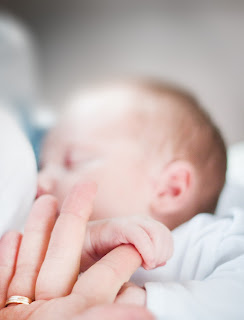Know everything about Whooping cough or Pertussis, a highly contagious respiratory infection
Whooping cough, also known as pertussis is an extremely infectious disease of the respiratory tract characterised by sudden bouts of coughing with typical whooping sounds. It is an airborne infection that spreads through the droplets scattered or shed via coughing and sneezing of an infected person.
Bordetella pertussis is the causative organism, a bacterium that causes whooping cough or pertussis.
It is included in the WHO top six killer diseases in children and is a vaccine-preventable communicable disease.
Universal immunisation schedule for infants and child covers the pertussis vaccine in the form of a trivalent, DPT(diphtheria, pertussis and tetanus) vaccine shot.
Whooping cough can be a serious infection if not treated promptly. It can be a cause of infant mortality in babies who are not immunized properly.
Whooping cough is commonly seen in infants, however, it can also be seen among adults. The symptoms are related to the respiratory system such as runny nose, fever, vomiting, coughing fits/spells, cyanosis, periods of apnea in between the coughing spells.
What are the signs and symptoms of Whooping cough or Pertussis?
The symptoms of whooping cough start to appear almost 7-10 days following the infection. The typical symptoms of pertussis may last for weeks or months. The first 3 weeks are the most contagious and the person has the cough bouts that may last for almost 4-8 weeks.
The following are the signs and symptoms of whooping cough:
- Fever, may start as a low-grade fever
- Runny nose (flu-like symptoms)
- Coughing spells/fits
- Sudden gasp or whoop sound at the end of violent coughing bouts.
- Breathing difficulty or sudden apnea in infants
- Whooping sound after the coughing fits
- Bluish discoloration of skin and mucus membranes, known as cyanosis (in babies)
- Babies may not feed well
- Vomiting
- Exhaustion
The coughing fits are more severe and these may last for more than 10 weeks sometimes. It is therefore, sometimes referred to as a 100-day cough fever.
- Anyone can have whooping cough. However, the infants are more commonly seen infected with whooping cough.
- The infants who are vaccinated may have a milder form of disease than those who are not vaccinated.
- The teens and the adults who have got themselves vaccinated are also less at risk of infection and even if they get infected, the symptoms are usually milder, just like common cold with less coughing spells or not at all.
- Non vaccinated people are at more risk to contract whooping cough than the vaccinated ones.
- People with weakened immunity also tend to get infection more often.
- People with co-existing respiratory infections are also susceptible.
What are the causes and risk factors of whooping cough or pertussis?
Whooping cough is a highly contagious illness and it gets easily transmitted from one people to another. The bacteria enters the respiratory tract while a person inhales. The respiratory tract is lined by the tiny hair-like structures called cilia. The bacteria produces toxins or harmful chemicals that act on cilia and start causing swelling and other inflammatory changes.
- Age: Anyone of any age can have whooping cough. However, the infection is commonly seen in infants.
- Vaccination status: Vaccinated infants and adults are less at risk and even if they get infected, the disease appears milder.
- Caregivers: Infants tend to contract the infection from their infected caregivers, mother, siblings, or any other family members.
- Weak immunity levels: People with poor immunity levels are at risk to get infected easily.
- Developing countries: The people and especially the infants residing in a developing nation or underdeveloped nations are at more risk of getting whooping cough.
- Many infected people are subacute clinical cases or carrier who spread the bacteria in the environment unknowingly.
How is Whooping cough(Pertussis) diagnosed?
- A thorough physical examination of the symptoms, history of the present complaints.
- A nasopharyngeal swab is taken from the back of the throat and nose and the sample is tested in the laboratory. The diagnosis can be done by culture or Polymerase chain reaction(PCR) method.
- Blood tests or serology tests
- chest x-ray (Pneumonia is often a complication of whooping cough)
What is the treatment of whooping cough?
- Getting the vaccines for whooping cough, both infants and adults.
- Hand washing for at least 20 seconds with soap and water.
- Disinfecting the surfaces that are touched by an infected person.
- Avoiding contact with a sick person.
- Eating a well balanced and healthy diet.
- Always covering the mouth and nose while you cough or sneeze.
- Make sure the caregiver of the infants is immunised for whooping cough.
Whooping cough or pertussis is a highly contagious bacterial infection caused by the bacterium, Bordetella pertussis. It is an airborne respiratory infection that is more common in infants and children. People who are not vaccinated may get whooping cough, too. Severe or violent coughing spells and a whooping sound are the major symptoms of whooping cough or pertussis. Antibiotics are used to treat whooping cough. Hand-washing, vaccines, distance from the sick people and healthy diet help in the prevention of the disease.


Comments